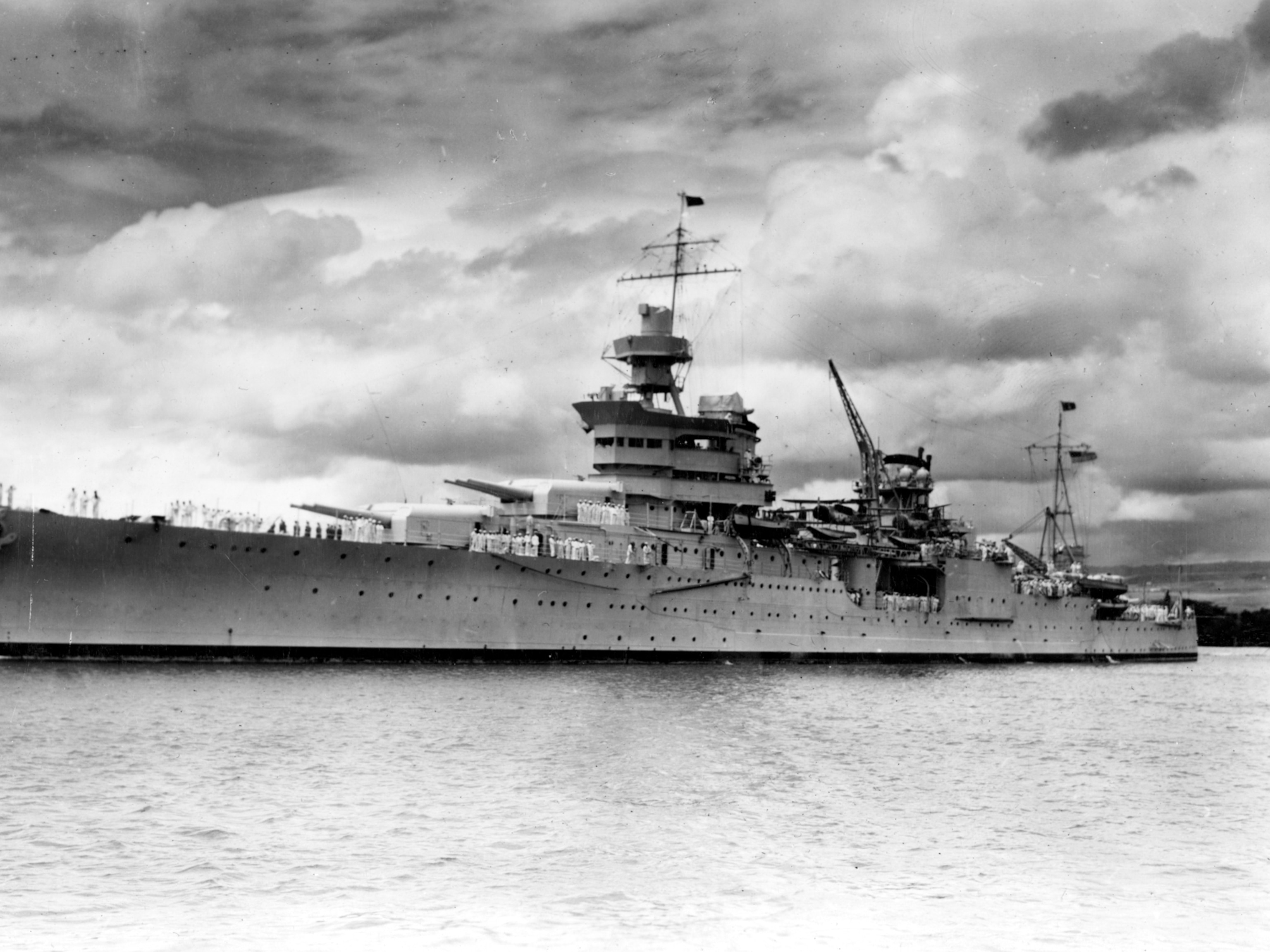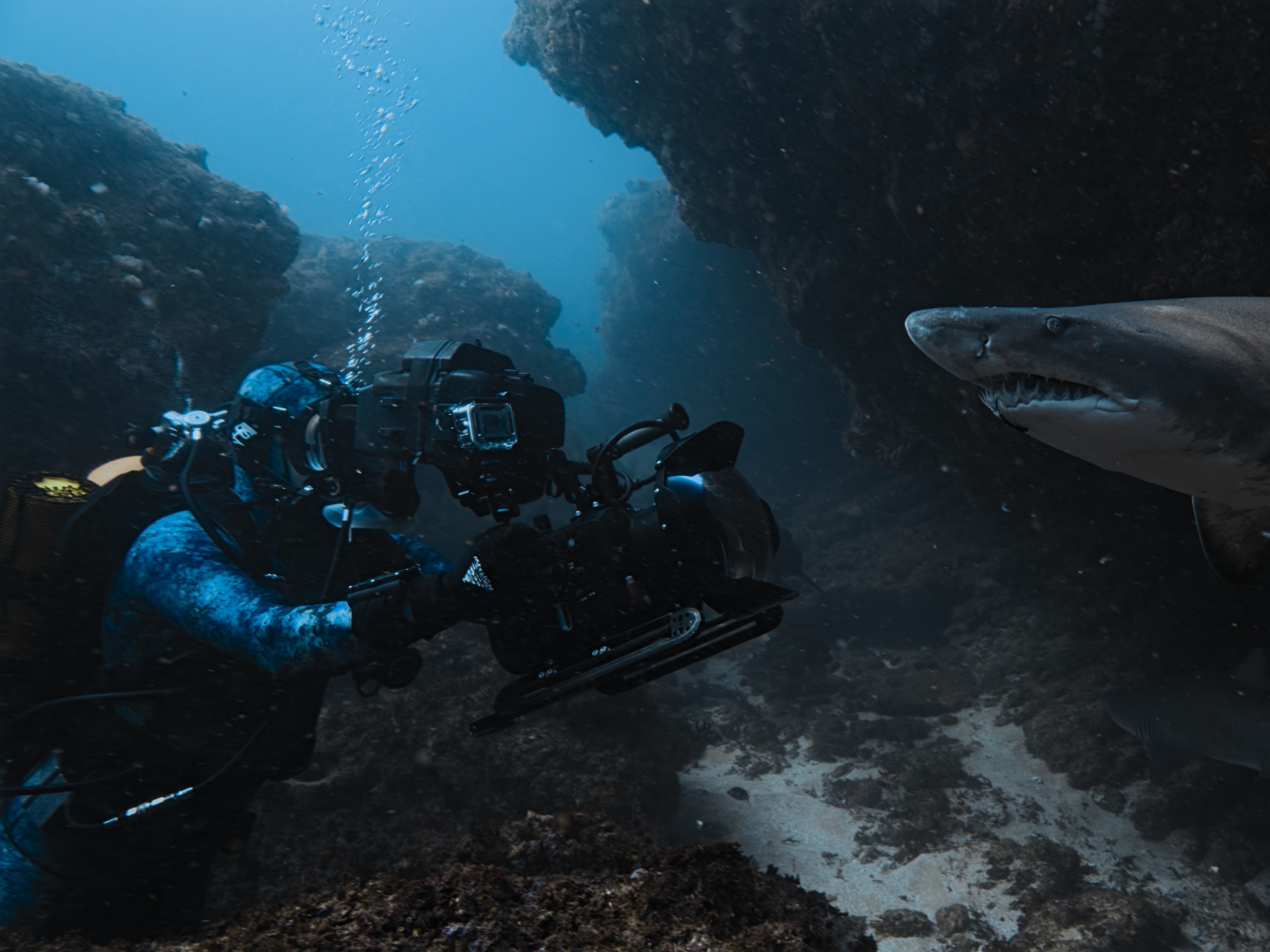How Tales of Shark Attacks Shaped a U.S. Warship’s Legacy
The U.S.S. Indianapolis's sinking in shark-infested waters was a low point for American forces in World War II.

On July 26, 1945, the heavy cruiser U.S.S. Indianapolis landed on Tinian Island in the northern Pacific and delivered components for the atomic bomb that 11 days later would be dropped on Hiroshima. World War II was almost over. But for the crew of the Indy, the worst of the war was yet to come. Four days later, en route to the Philippines, the ship was torpedoed by a Japanese submarine. The ship sank in 12 minutes, taking some 300 men down with it. The remaining 900 men were set adrift for the better part of five grueling days. Only 317 survived. It was the worst disaster at sea in U.S. naval history.
It was also perhaps the U.S. Navy’s most shameful debacle. The stranded sailors died in many ways, all horrible: injury, hypothermia, saltwater poisoning, shark attack—even homicide, when men began slipping into hallucinatory madness, stabbing and drowning shipmates they mistook for enemies. But most of those deaths had the same ultimate cause: the Navy’s failure to notice the Indianapolis was overdue at its next port of call and its failure to investigate. No search party was dispatched; the survivors were rescued only after a passing plane spotted them. To deflect blame, the Navy court-martialed the ship’s captain, Charles McVay, for failing to elude the attack—the only U.S. captain court-martialed for losing a ship in the war. He later committed suicide. After a campaign to clear his name, McVay was exonerated in 2000, and the Indy survivors had something to celebrate at last: their story told truly.




